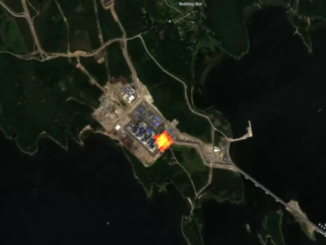
OPEC and its allies are expected to approve another modest oil-output increase this week, yet once again struggle to deliver all of the extra supplies into a red-hot crude market.
The recovery in fuel consumption from the pandemic continues apace, leaving plenty of room for the 23-nation coalition led by Saudi Arabia and Russia to boost production. But members from Nigeria to Russia have been running out of spare capacity and struggling to revive their output after years of cuts and under-investment.
Even as delegates from about half the coalition’s members say they expect OPEC+ to ratify another 400,000 barrel-a-day supply hike for March, markets are tightening and propelling prices above $90 a barrel. All 16 respondents in a Bloomberg survey of traders, analysts and refiners also predicted an increase, but doubted it will be achieved in full. In November the group only implemented about 60%.
“I think they’ll continue the way they’re doing it” with another incremental boost, said Torbjorn Tornqvist, chief executive officer of commodity-trading house Gunvor Group Ltd. But OPEC+ may be losing control of the market “because now we’re back in a situation where we’re watching what the spare capacity is going to be.”
This is a pressing concern for consuming nations and central banks as they reckon with an inflationary surge that’s not just causing pain for motorists, but also contributing to a cost-of-living crisis for millions. With the approach of U.S. midterm elections, there’s particular peril for President Joe Biden, who has sought to tame fuel costs to little avail.
Aging Fields
Only Saudi Arabia, the United Arab Emirates and Iraq have enough spare production capacity to deliver meaningful increases, Tornqvist said. For other members of the Organization of Petroleum Exporting Countries, depressed investment has taken its toll.
Angola’s aging deep-water fields are in decline, while Nigeria’s pipelines are plagued by leaks. Even Russia, the second-biggest member of the alliance, has been unable to increase in recent months following a decline in drilling.
With consumption bouncing back and production constrained elsewhere in the world, a global market that was expected to be in surplus this quarter could actually be under-supplied. Prices are already at the highest since 2014, gaining extra momentum from renewed geopolitical tensions. For some traders, a return to $100-a-barrel has taken on an air of inevitability.
While the Biden administration could try to push its allies in Riyadh and Abu Dhabi to fill in the shortfall by tapping their idle reserves — having achieved some diplomatic success in keeping OPEC+ exports flowing late last year — Saudi Energy Minister Prince Abdulaziz bin Salman has so far resisted the idea.
“The U.S. outreach to the key OPEC players will intensify as oil prices move deeper into President Biden’s political danger zone,” said Helima Croft, commodities strategist at RBC Capital Markets LLC. “Washington will likely have to do the additional diplomatic groundwork to set the stage for such a production pivot.”
Thin Buffer
As OPEC+ presses on with restarting the remainder of its offline barrels, anxiety over the spare reserves it holds to cover disruptions is intensifying. The group’s buffer amounts to barely 4% of global supplies and by summer will likely diminish to about 2.3 million barrels a day, the lowest since 2018.
That’s a source of growing anxiety for traders, as the recent drone strike in Abu Dhabi and tension between Russia and the West over Ukraine emphasize the ever-present geopolitical risks.
“Right now we still have spare capacity, but we are expecting a recovery in demand from now to the year-end,” said Giovanni Serio, global head of market analysis at Vitol Group, the world’s biggest independent oil trader. By year-end, global demand will be at or above 2019 levels, leaving the world with only a thin margin of spare capacity entirely within Saudi Arabia, he said.
The outlook isn’t universally bullish. Leading institutions such as the International Energy Agency still expect world markets to slip back into surplus later this year as supplies from the U.S. and elsewhere pick up. An extra flood of output could come if Iran secures an agreement — so far elusive — to remove American sanctions on its petroleum trade.
“We see the near-term tightness as a winter phenomenon, and see global oil balances moving back to surplus in the second quarter,” said Ed Morse, head of commodities research at Citigroup Inc.
Yet expectations for a calmer market are growing increasingly scarce. In its most recent report, the IEA sounded more tentative on its projected surpluses for 2022 as supplies from OPEC+ and elsewhere continued to disappoint.
“Demand is 100 million barrels a day with a spare capacity of 2.5 million,” said Gunvor’s Tornqvist. “That doesn’t sound like an oversupplied market, does it?”
Source: Bloomberg



